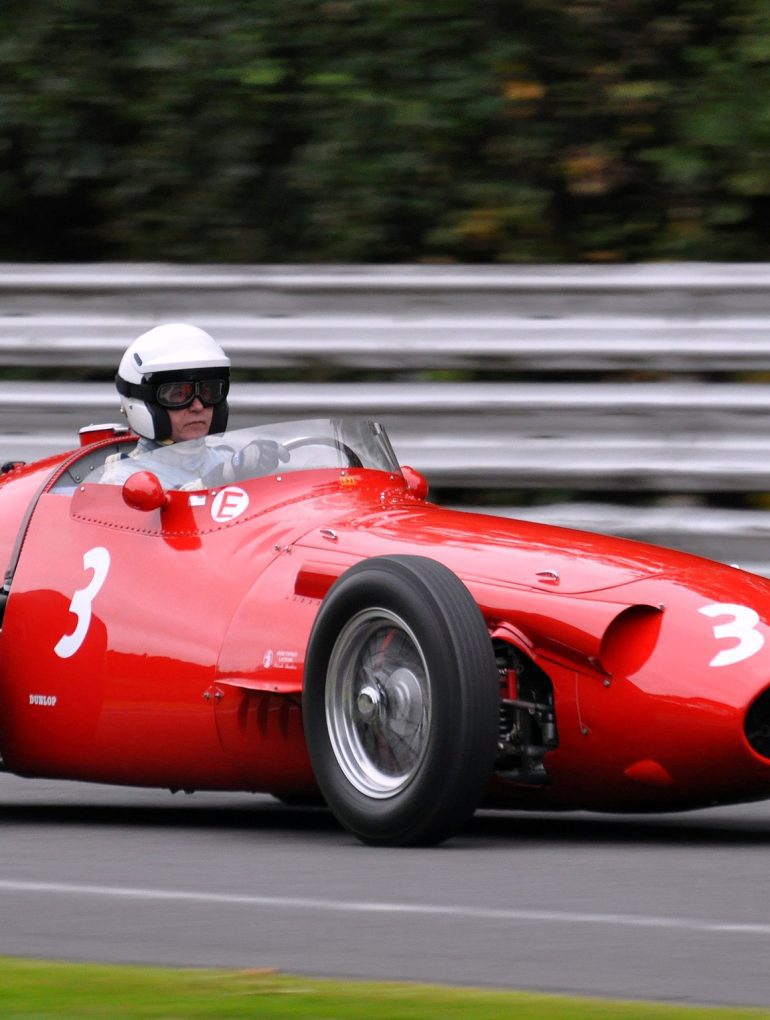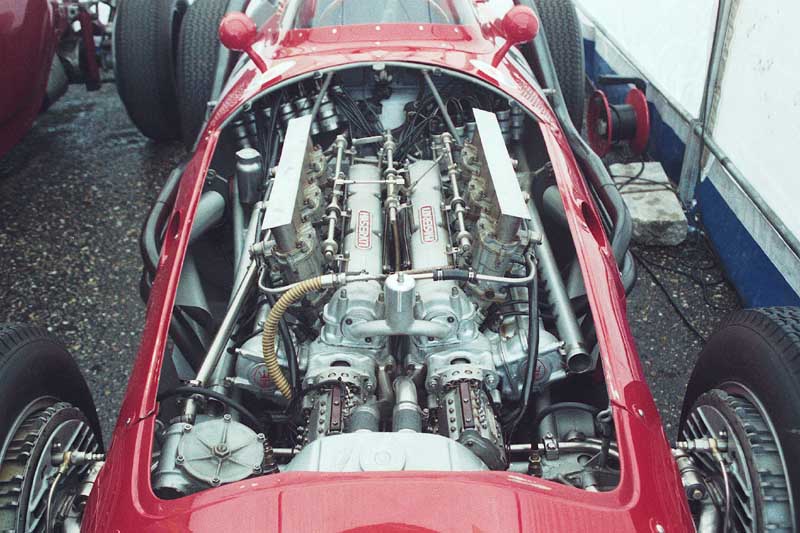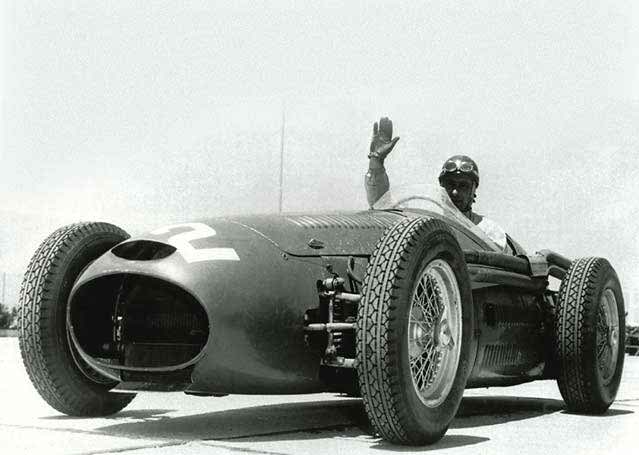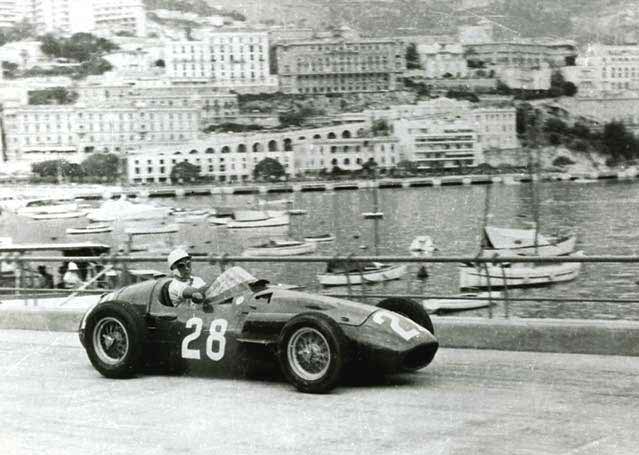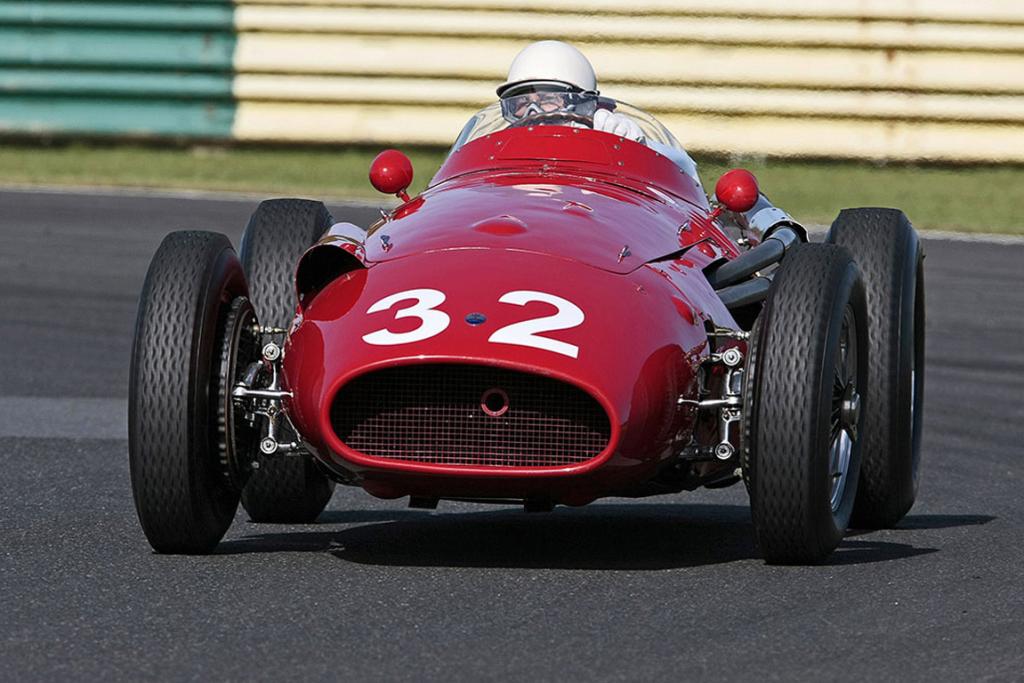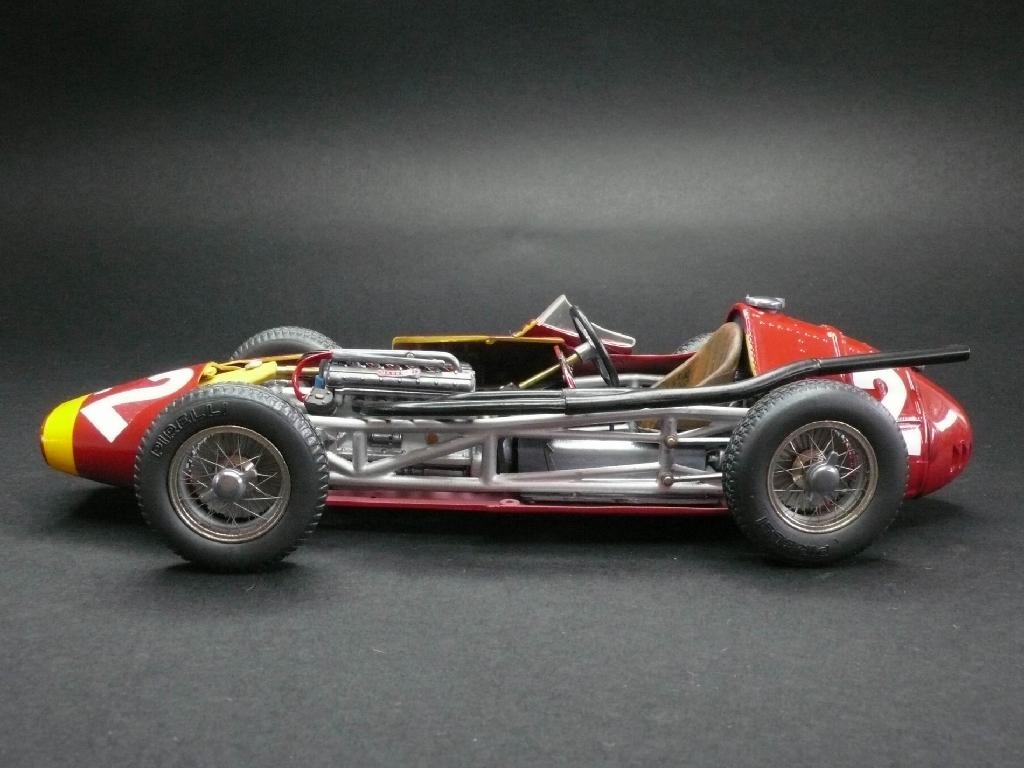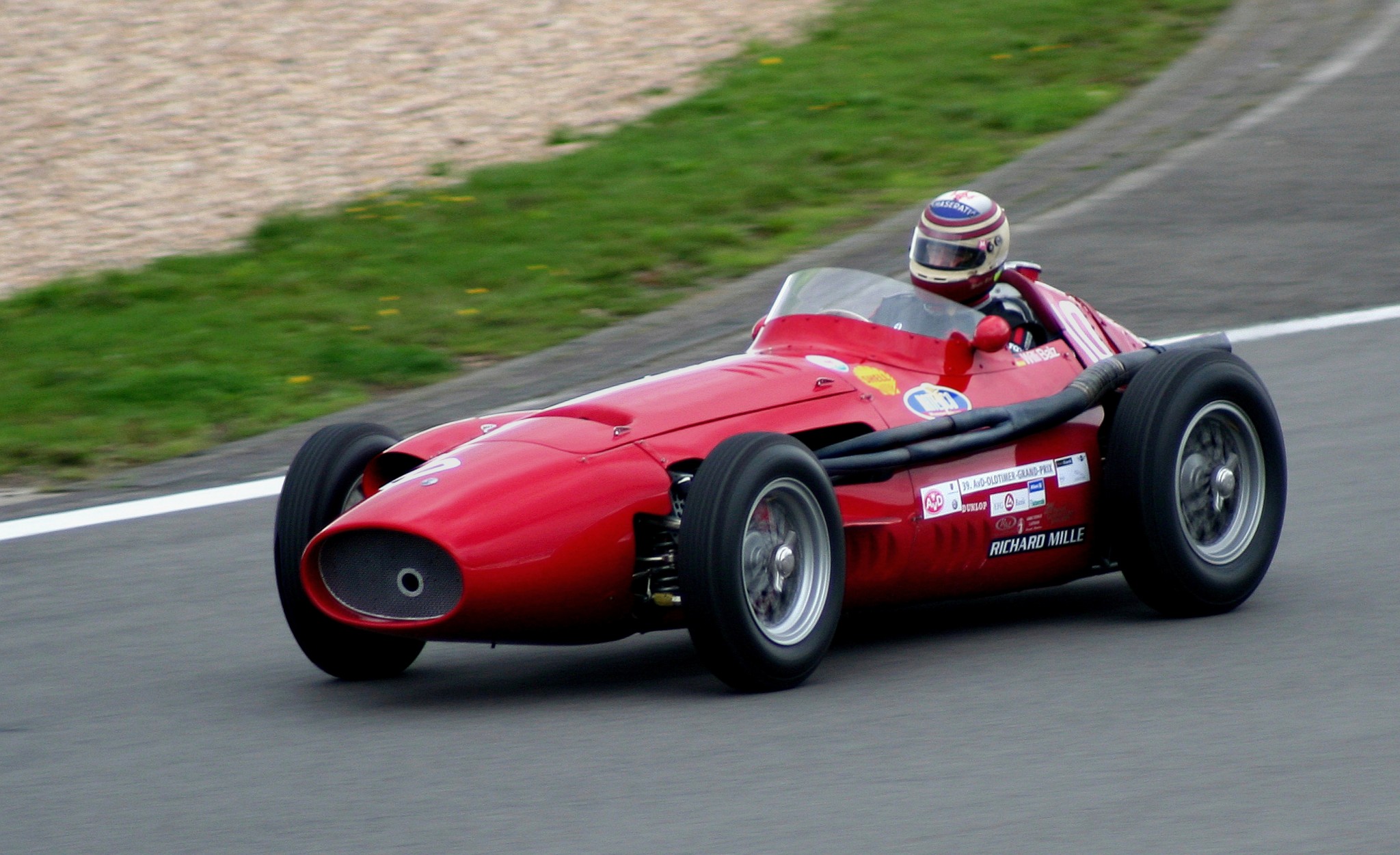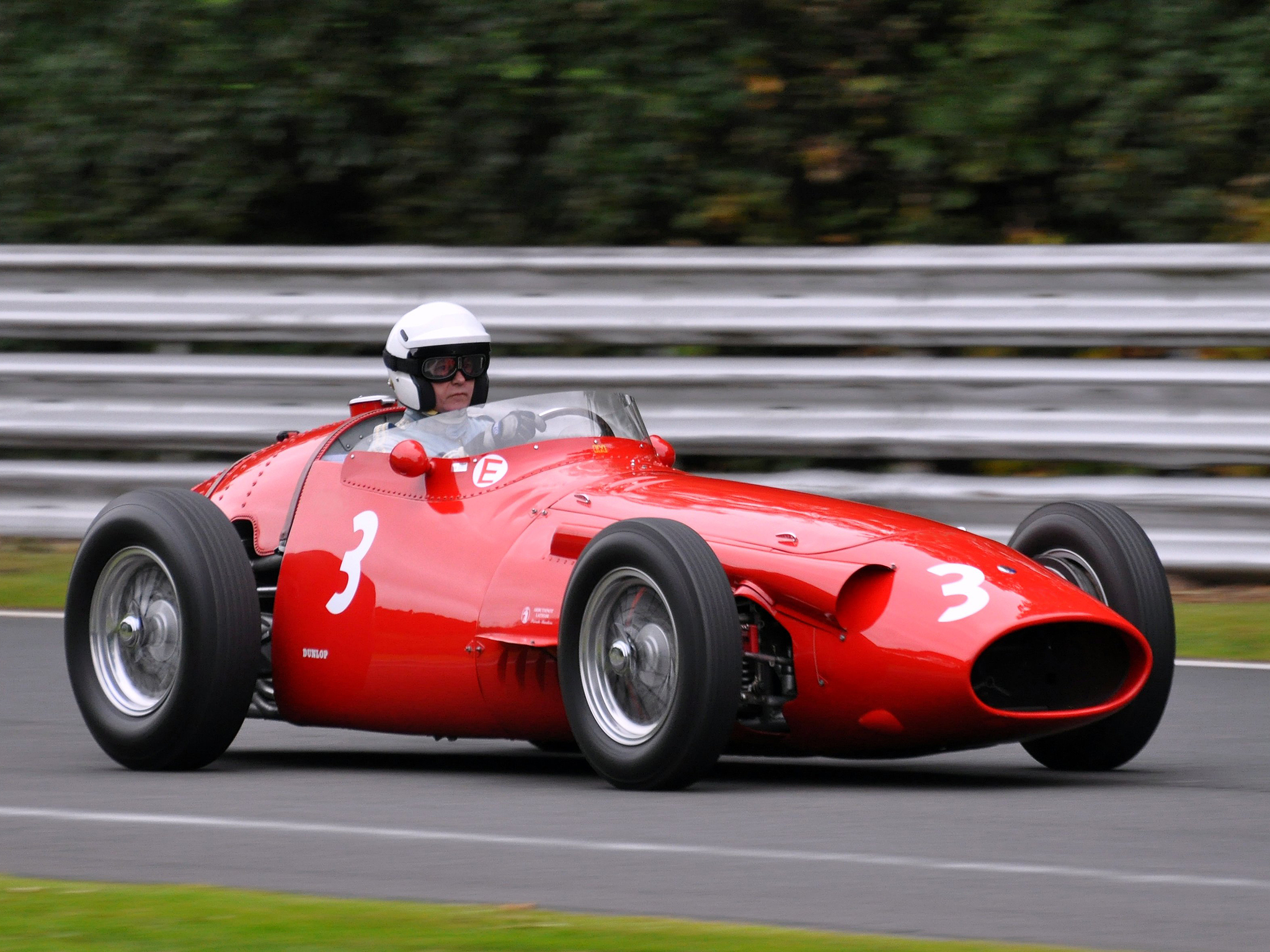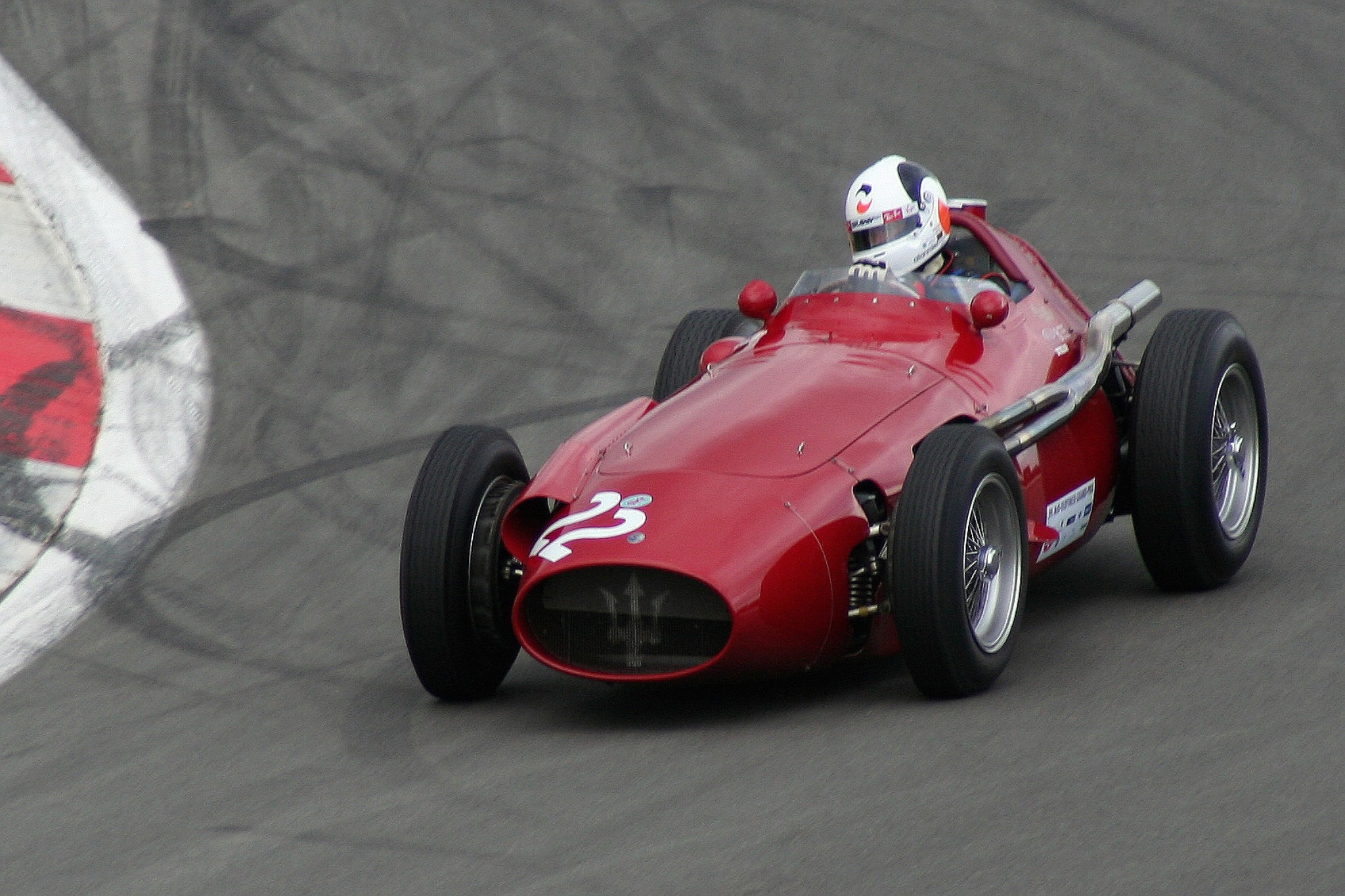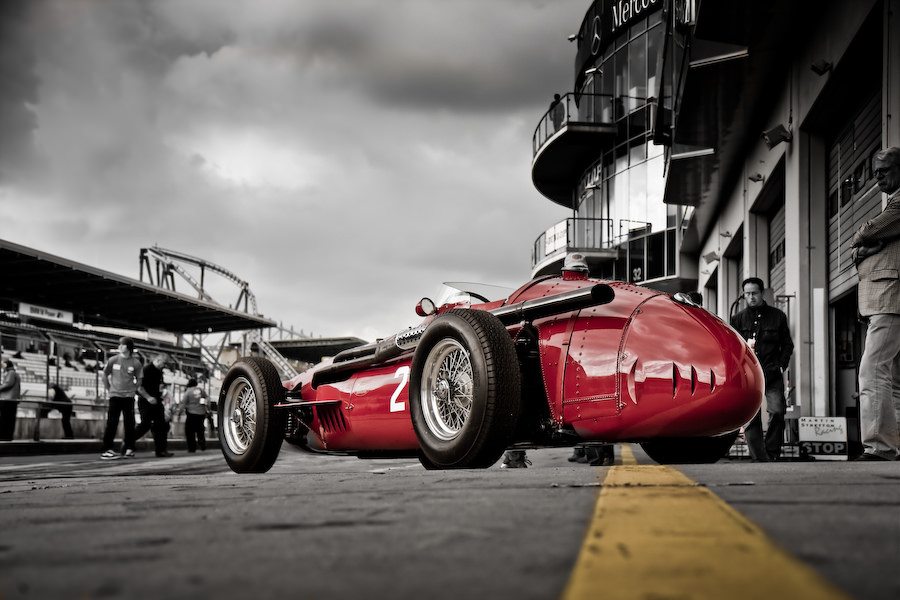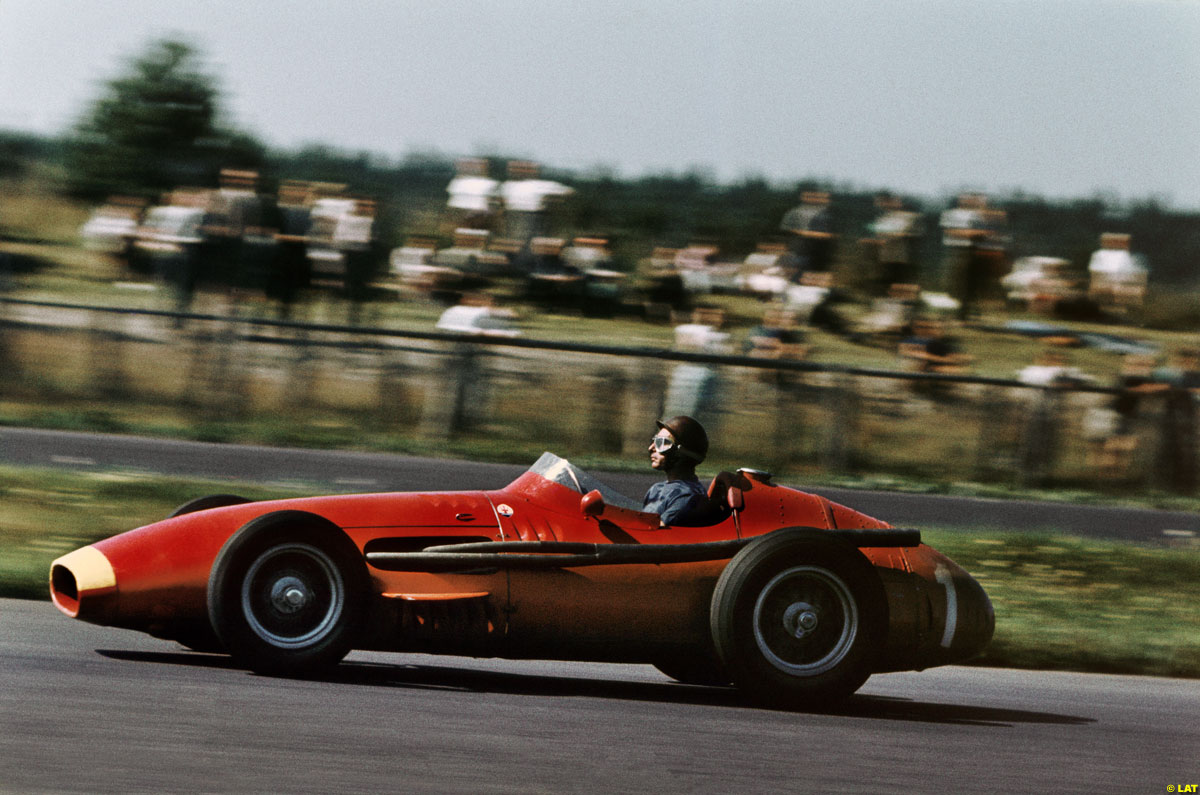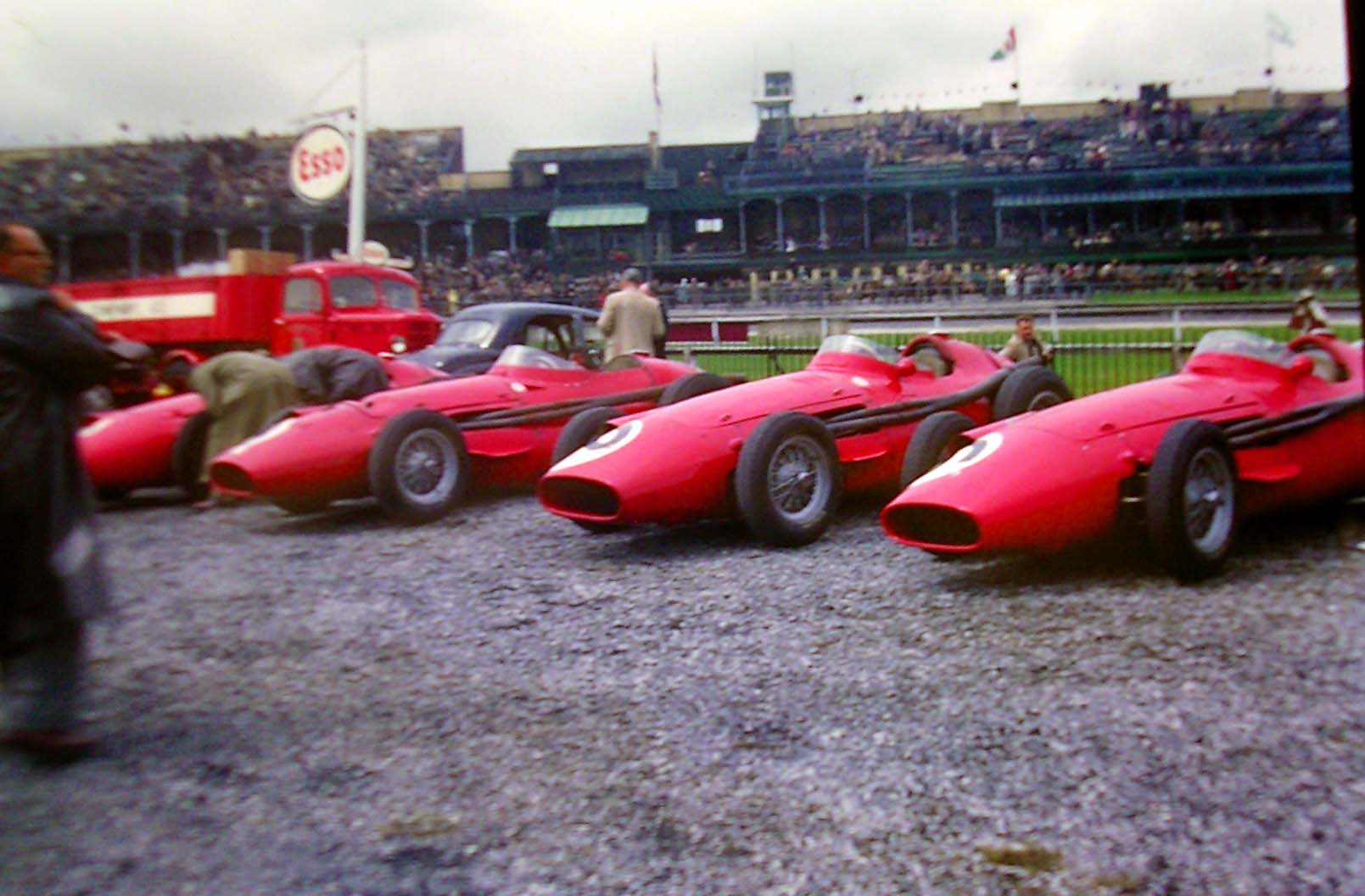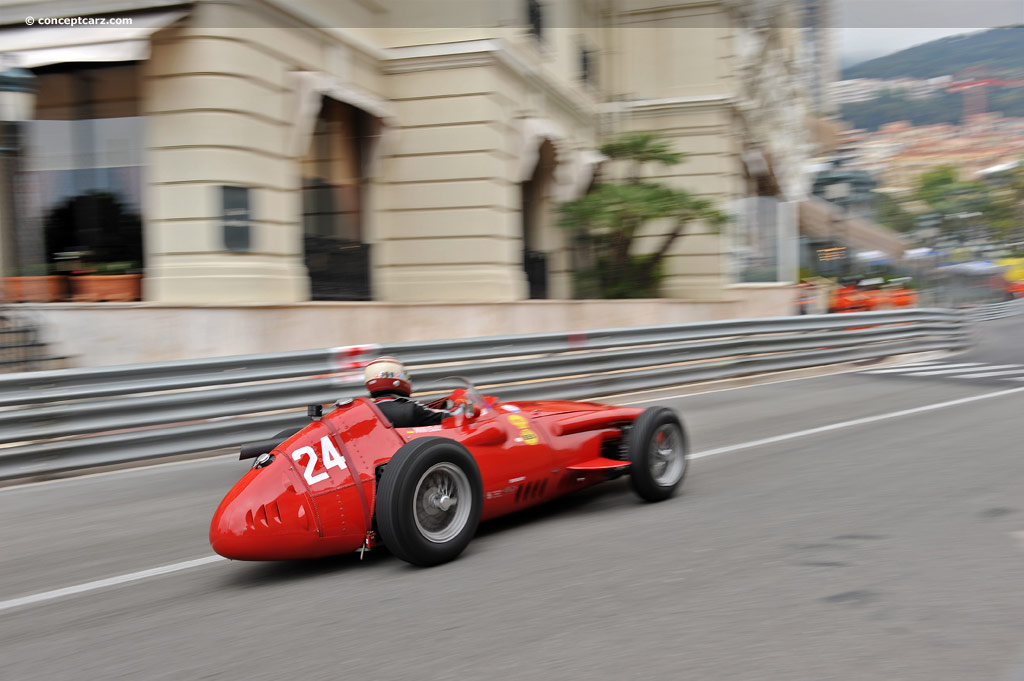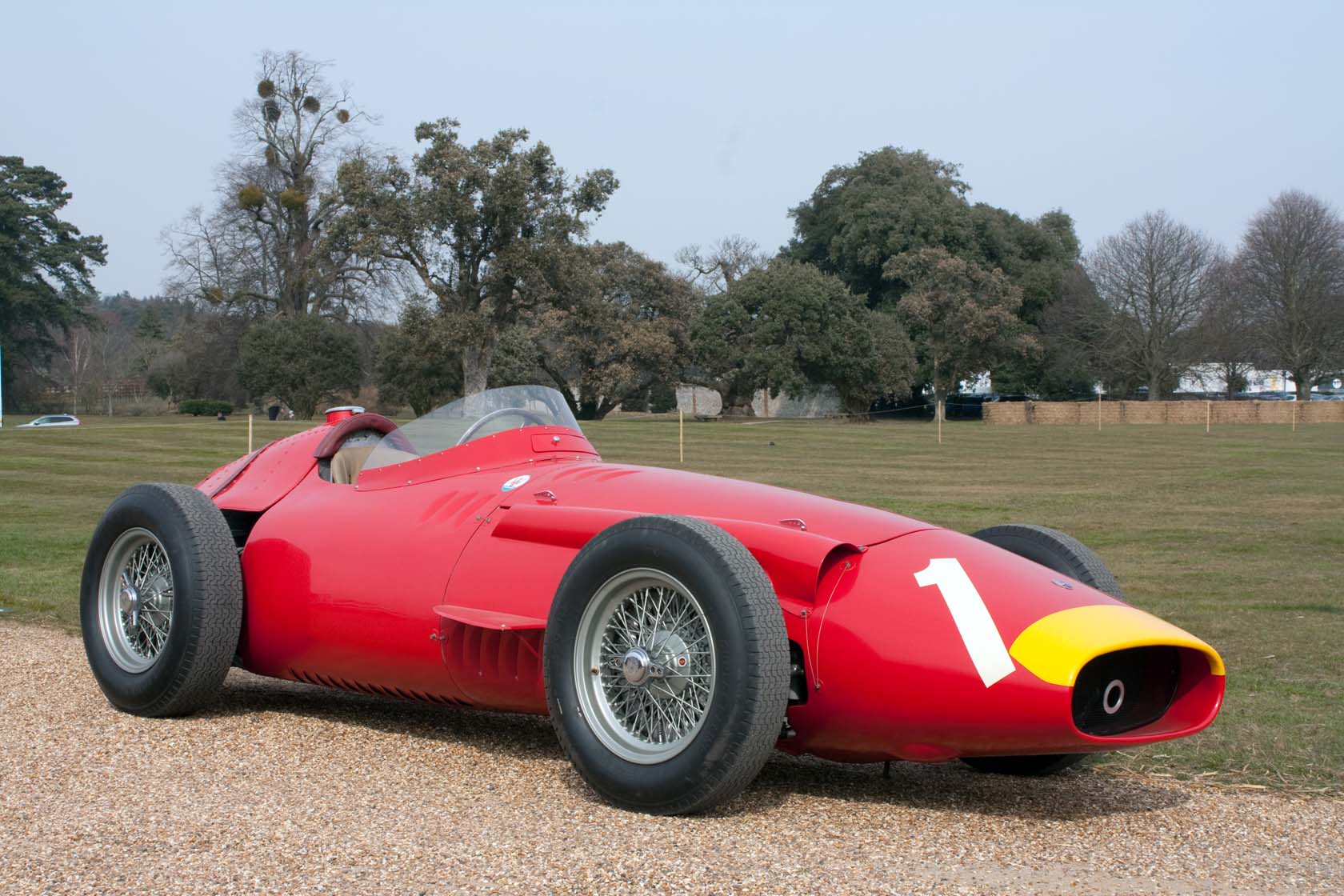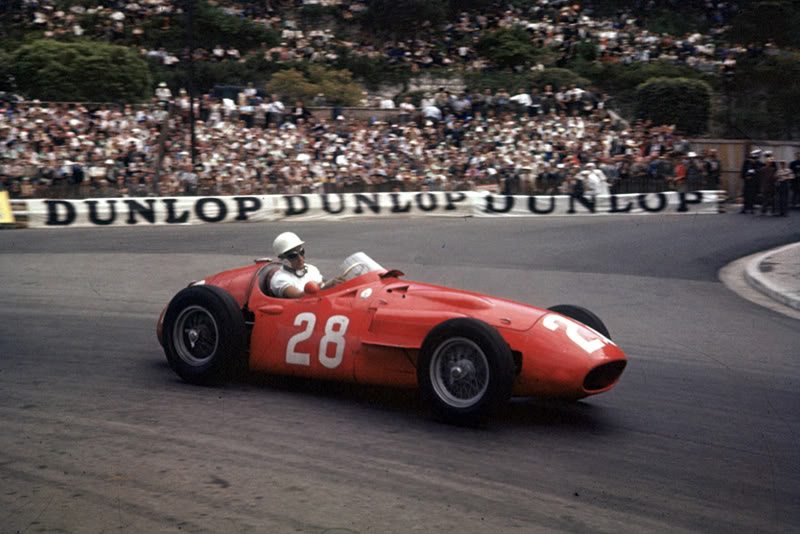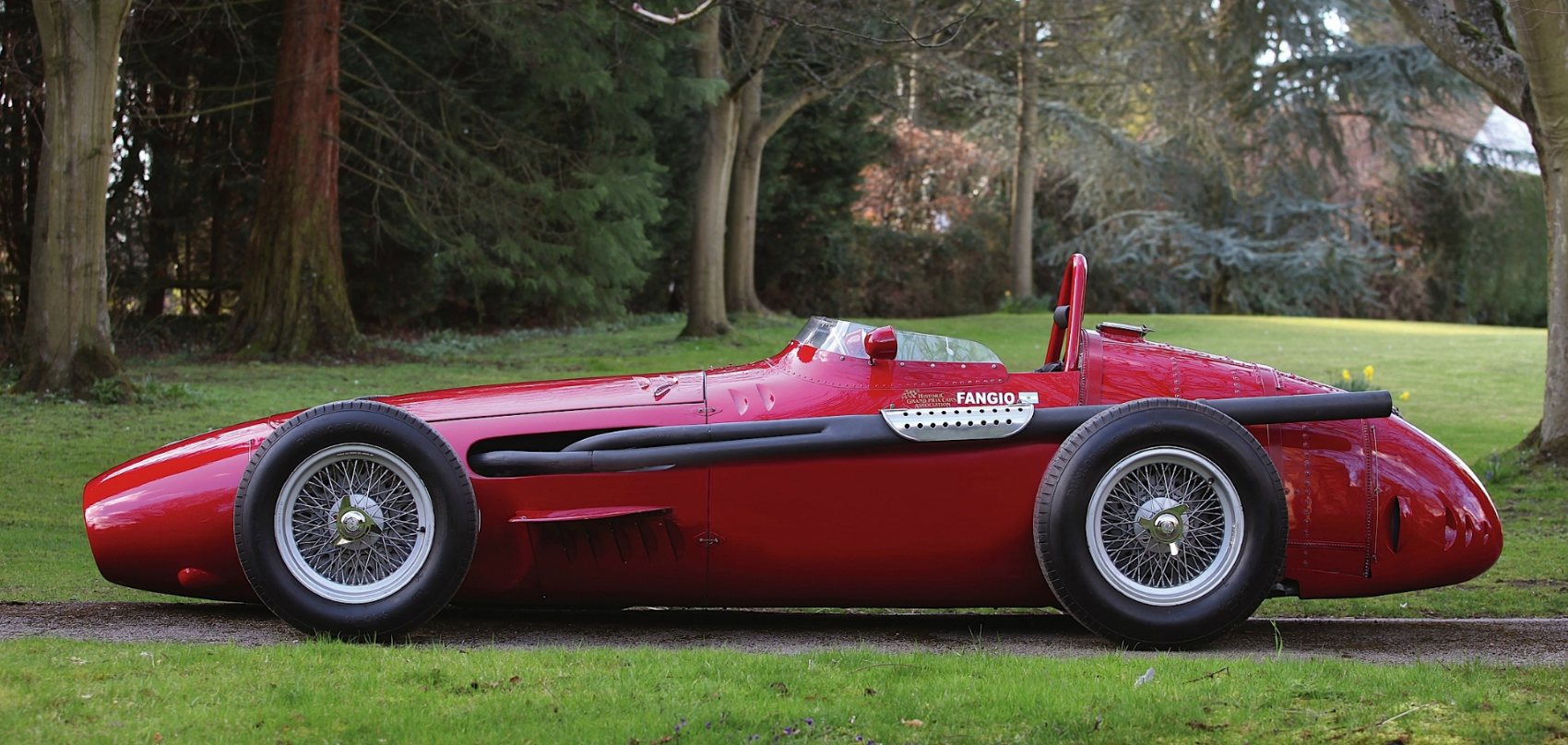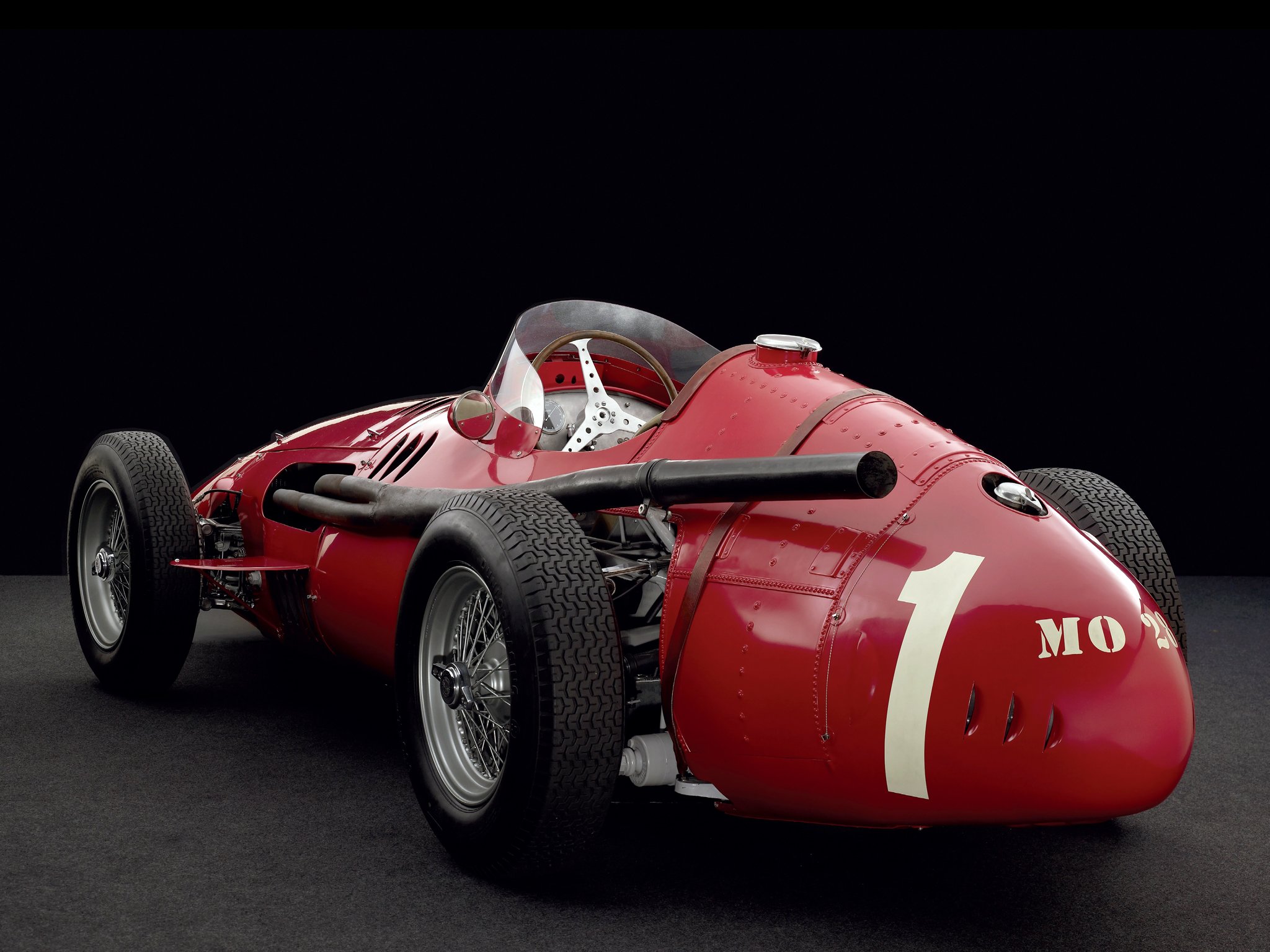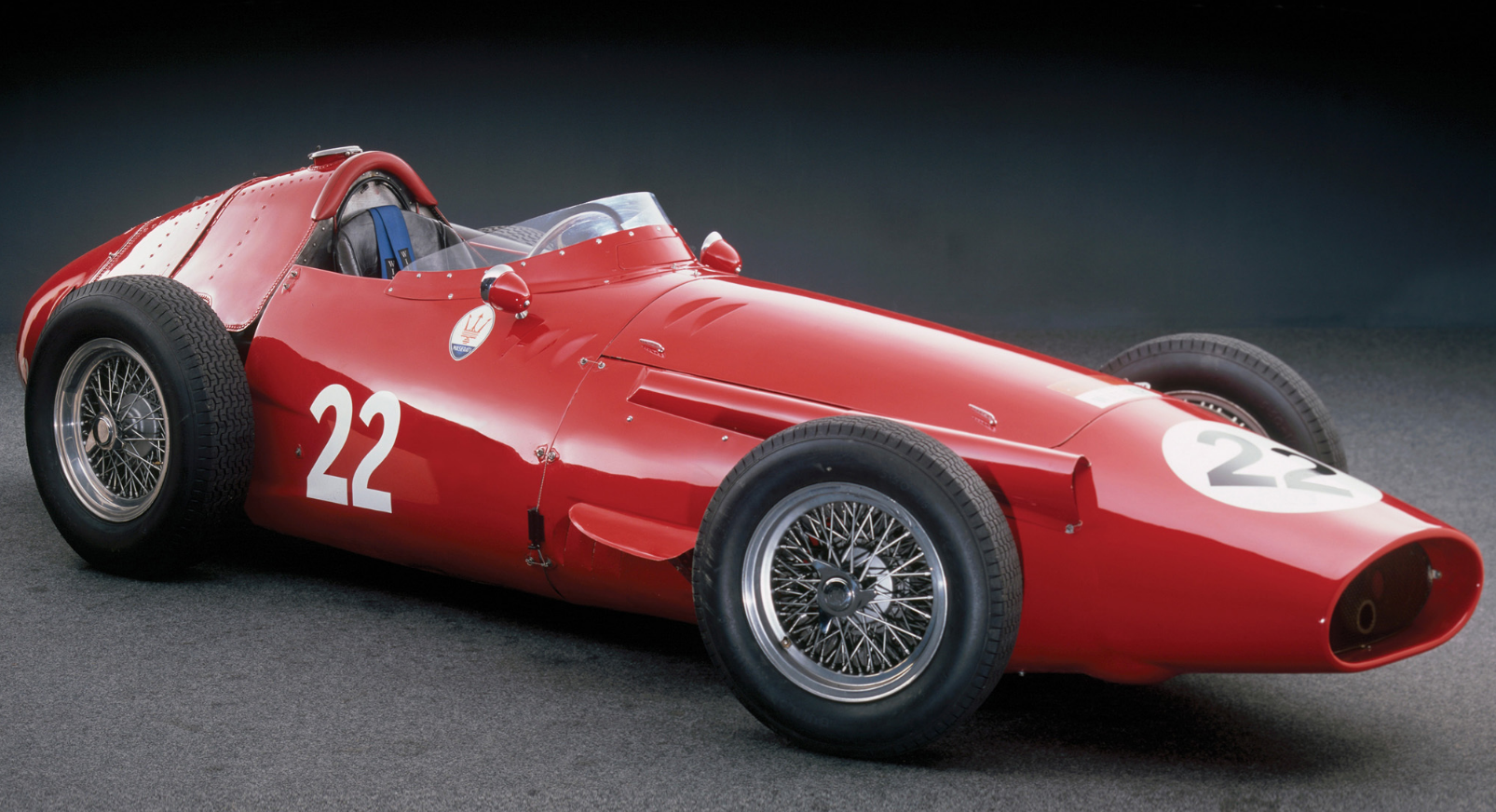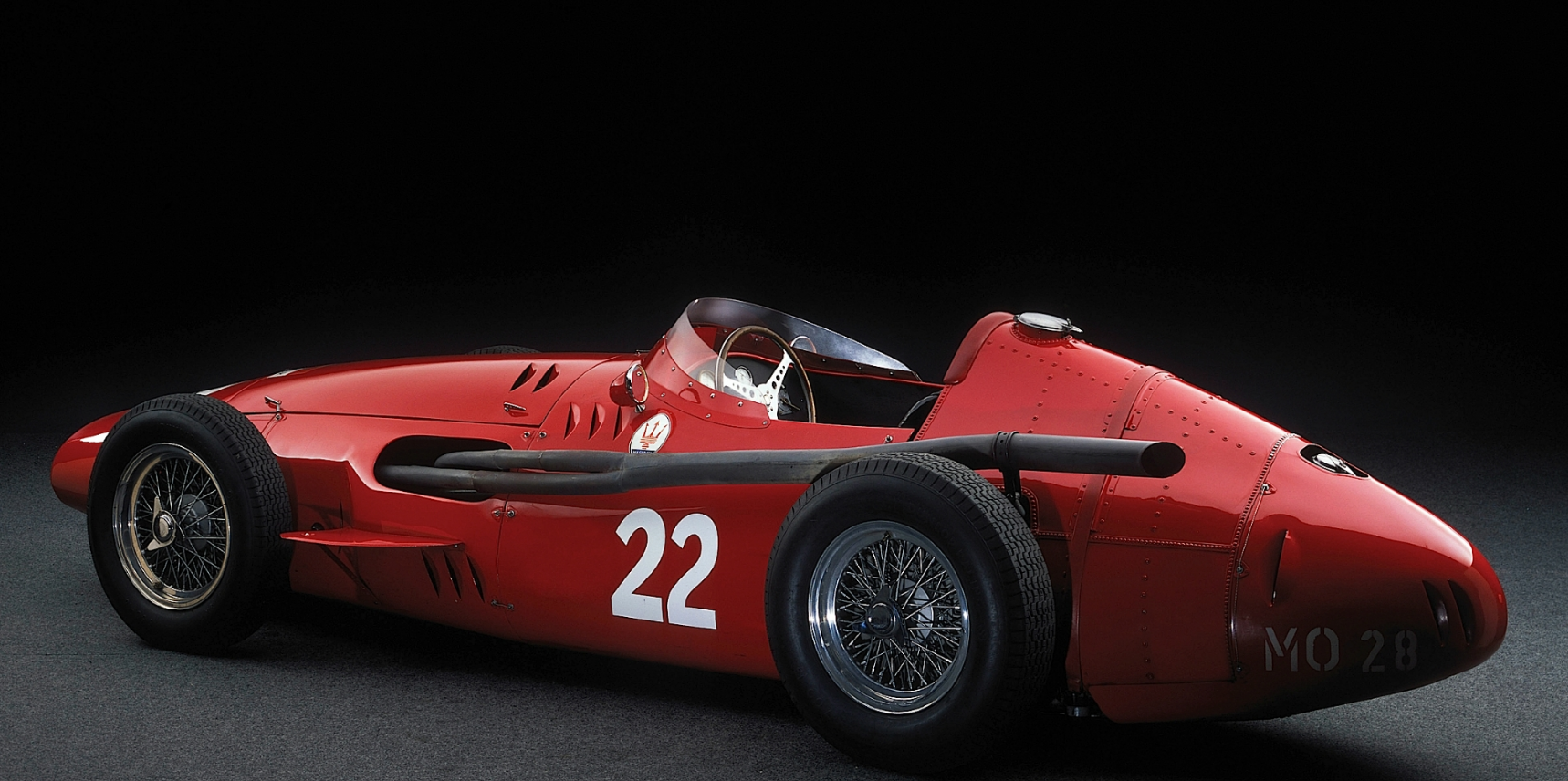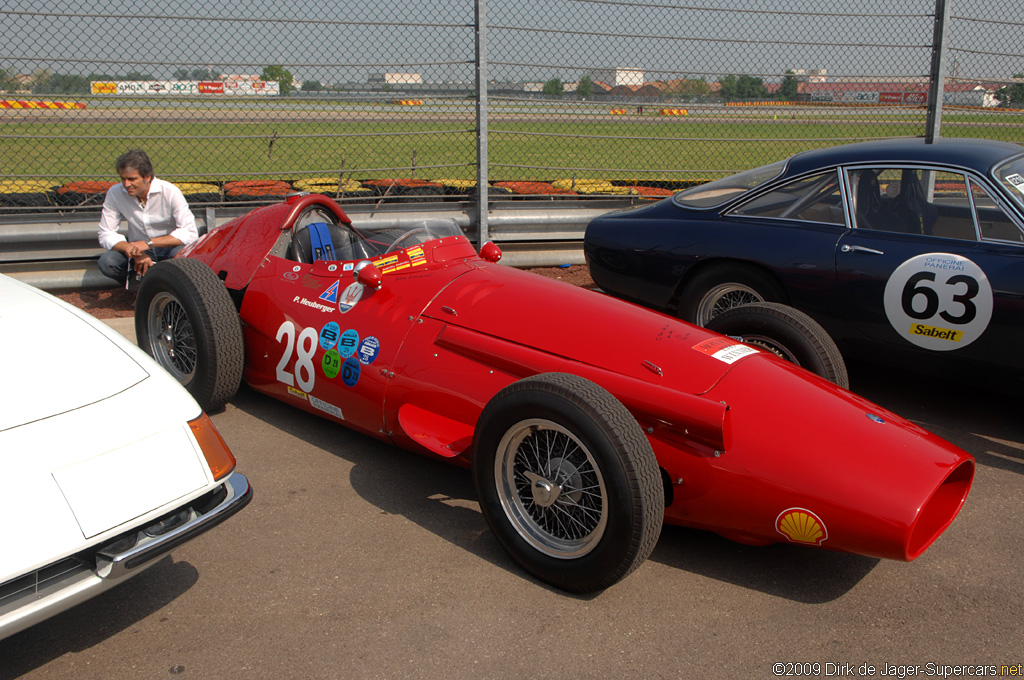1957 Maserati 250 F
Designed for the 2.5 litre Formula 1 regulations new for the 1954 season, the 250F followed the lines of Maserati’s Formula 2 racers of 1952 and 1953. A simple tubular frame carried the suspension, aluminium body panels and engine. The front suspension was independent by wishbones and coil springs. The rear used a DeDion type axle, made popular by the front engined Mercedes-Benz Grand Prix racers of the 1930s.
The Maserati 250F raced four seasons strong and came up with 8 championship victories. It remains as one of the last front engined grand prix cars.
The 250F’s straightforward design did make it a popular choice with privateers and while Fangio dominated Formula 1 in the Mercedes W196 and D50, Maserati produced around two dozen examples in three years.
Maserati did not take the defeats lying down and gradually developed every aspect of the 250F’s design. Much of this work focused on the shape of the body, reflecting an ever growing emphasis on reducing drag. During the 1954 season an all-enveloping ‘streamliner’ body was used on high speed tracks and for 1955 the definitive ‘long nose’ was introduced by in-house designer/coach-builder Medardo Fantuzzi. Chief engineer Giulio Alfieri also spent a considerable amount of time devising a fuel injection system for the twin-cam straight six. Another experiment was the off-set installation of the engine in the chassis, which allowed the prop-shaft to run alongside the driver. This in turn allowed the seat to be mounted considerably lower.
Another two victories in 1956 showed that progress indeed was made but with the return of Fangio to the Maserati ranks in 1957, more even drastic improvements were needed. An all-new multi-tubular space-frame chassis was laid down. It followed the same lines but was considerably lighter and stronger than the much more conventional original. The double wishbone front and DeDion axle rear suspension were carried over. Despite the advent of the more efficient disc brakes, Alfieri stuck to drums. These were, however, of a fresh design with improved stopping power and cooling characteristics. The latest version of the straight six engine was carried over but, surprisingly, it was not mounted off-set in the new ‘Tipo 2’ or ‘T2’ chassis.
In addition to the new lightweight chassis, Alfieri also devised a new engine in 1956. Very much a clean-sheet design, this was a sophisticated V12 engine with twin overhead camshafts. These were driven by a series of gears from the front of the engine. The 60º cylinder angle in combination with the twin-cam layout left little room between the banks, so Alfieri had to fit the Weber carburettors between the camshafts. As was common on Maserati engines of the day, a twin spark ignition system was fitted. The 24 plugs were fed by two massive magnetos driven by the gears at the front of the engine and 24 individual coils. An engineering work of art, the 2.5 litre V12 produced 320 bhp at a startling 12,000 rpm. That was a whole 50 bhp more than the straight six.
With the V12 still under development, the Maserati team started the 1957 season with the heavily revised 250F equipped with the straight six engine. The tried and tested unit proved more than powerful enough to fight off the rivals that included the ailing Ferrari team and very impressive British Vanwall team. The latter proved to be Maserati’s biggest challenger, despite only using a four cylinder engine. Fangio nevertheless showed he was still the fastest man in Formula 1 even though he was already 45 years old at the time. In the six cylinder T2, ‘the old master’ won four of the first five races on his way to his fifth driver’s title. The fourth was the legendary victory at the Nürburgring when Fangio broke the lap record 10 times in just 22 laps.
Fangio’s excellent results with the six cylinder engine, gave the Maserati engineers additional time to thoroughly develop the V12. Early tests, in an older chassis, showed that the power delivery was nothing short of brutal. During the summer three T2 chassis were built specifically for the V12 engine and one was ready in time for the final Grand Prix of the year; the all-important Italian Grand Prix at Monza. Thanks to a redesigned gearbox, the V12 could be mounted off-set in the T2 chassis. The new car could be easily recognised because of the two bumps on the very low body-work that were needed to clear the carburettors. Behind the wheel of the V12 250F Frenchman Jean Behra impressed during the early stages of the race but he was forced to pit to replace the rear tyres, which were not quite capable of enduring the 320 bhp for too long. Sadly Behra later had to retire with lubrication problems from what had been a promising debut.
There would be no second chance for the V12 engined 250F as a cash-strapped Maserati retired from international racing at the end of the 1957 season. The surviving 250Fs were sold to privateers either with the familiar straight six engine or without an engine altogether. It was not the end of the line for the V12 engine itself as it would go on to be used in various sports cars and ultimately in the back of a Cooper F1 car in three litre form. In this guise it would score two Grand Prix victories nearly a decade after it was first introduced. Wether the 250F T2 V12 could have challenged for victories in 1958 we will never know but it remains as the most powerful car built during F1’s 2.5 litre era.
See more Maserati cars and Maserati news.
1957 Maserati 250 F Gallery
See full 1957 Maserati 250 F Gallery here
Maserati 250 F In Detail
| submitted by | Richard Owen |
| engine | Inline-6 |
| valvetrain | DOHC 2 Valves / Cyl |
| displacement | 2493 cc / 152.1 in³ |
| bore | 84 mm / 3.31 in |
| stroke | 75 mm / 2.95 in |
| power | 201.3 kw / 269.9 bhp @ 8000 rpm |
| specific output | 108.26 bhp per litre |
| bhp/weight | bhp per tonne |
| body / frame | Aluminum |
| driven wheels | Front Engine / RWD |
| front brakes | Hydrualic Drums |
| f brake size | mm / in |
| rear brakes | Hydrualic Drums |
| r brake size | mm / in |
| front wheels | F 38.1 x 10.2 cm / 15.0 x 4.0 in |
| rear wheels | R 40.6 x 14.0 cm / 16.0 x 5.5 in |
| steering | Worm Gear |
| curb weight | 550 kg / 1213 lbs |
| wheelbase | 2200 mm / 86.6 in |
| front track | 1300 mm / 51.2 in |
| rear track | 1250 mm / 49.2 in |
| length | 4270 mm / 168.1 in |
| width | 910 mm / 35.8 in |
| height | 900 mm / 35.4 in |
| transmission | Transverse 5-Speed Manual |
| gear ratios | :1 |
| top speed | ~289.7 kph / 180.0 mph |
Auction Sales History
1956 Maserati 250F 2522 – did not sell for €1,350,000 The magnificent example of Maserati architecture offered here has remained virtually untouched in appearance since it last left the factory in 1958. Embodying the very best of Maserati’s 1957 World Championship-winning team experience, it is one of 26 chassis produced between the model’s debut in December 1953 and Maserati’s virtual abandonment of active racing in early 1958. Auction Source: 2009 Leggenda e Passione


